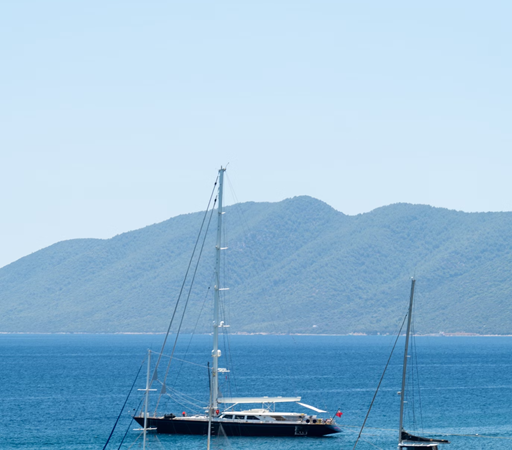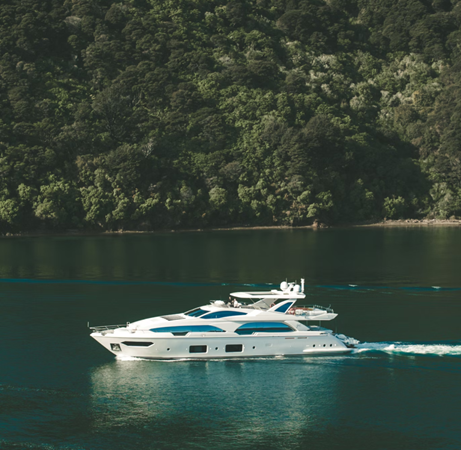2nd Longest River In Europe

Europe is home to some of the world’s most beautiful and iconic rivers, each with its own unique history and ecology. In this blog post, we’ll take a closer look at one of Europe’s longest waterways – the Danube. Spanning over 2,800 kilometers, the Danube flows through ten countries and serves as an essential source of life for millions of people living in its basin. From its origins in Germany to its delta in Romania, join us on a journey down this magnificent river as we explore its tributaries, ecology, use and engineering throughout history!
Table of Contents
The Danube
The Danube is the second longest river in Europe, stretching over 2,800 kilometers from its source in Germany to its delta in Romania. It flows through ten countries and serves as an essential source of life for millions of people living within its basin.
This mighty waterway has played a vital role throughout history, serving as a trading and transportation route for centuries. Its strategic location has made it a battleground for many wars, including World War II.
Today, the Danube remains an invaluable resource for agriculture and hydroelectric power generation. The river’s banks are home to numerous cities that rely on this waterway for their livelihoods.
But beyond its practical uses lies the beauty of this incredible natural wonder. From picturesque landscapes to stunning wildlife habitats, the Danube boasts breathtaking scenery that attracts visitors from around the world.
Whether you’re taking a leisurely cruise down this majestic river or exploring one of its many charming towns along the way, there’s no denying that the Danube is truly one of Europe’s greatest treasures.
Origins
The Danube, the 2nd longest river in Europe, has a rich history and origins that date back millions of years. The river was formed during the Ice Ages when glaciers melted and filled up existing river valleys.
The source of the Danube can be traced to two small tributaries located in the Black Forest region of Germany; Breg and Brigach. These two streams converge at Donaueschingen to form what is known as the young Danube.
As it flows eastward, it passes through four more countries: Austria, Slovakia, Hungary and Romania before emptying into the Black Sea. The river serves as an important transportation artery for these countries with several major ports located along its banks.
Throughout its journey from Germany to Romania, the Danube travels over 2800 km and drains an area of approximately 800000 square kilometers. Due to its length and location across multiple European countries, it has played a significant role in shaping their histories both economically and culturally.
Understanding how this great European river came into existence is essential to appreciate its importance not only ecologically but also culturally for all those who live along its banks.
Tributaries
The Danube river is fed by numerous tributaries, which play an important role in maintaining the ecological balance of the entire basin. Some of the major tributaries include the Drava, Tisza, Sava, and Morava rivers. These smaller streams add to the overall volume of water in the Danube watershed and contribute to its flow.
The Drava river originates in Italy and flows through Slovenia before joining with the Danube at Osijek, Croatia. It is home to a variety of aquatic species such as trout and salmon.
The Tisza river also begins in Ukraine but runs primarily through Hungary before flowing into Serbia where it joins with the Danube. The Tisza provides habitat for many bird species like eagles and herons.
Another significant contributor is Sava that flows from Slovenia through Croatia before reaching Serbia where it merges with the Danube near Belgrade. It also serves as a source for hydropower generation.
There’s Morova that starts from Czech Republic then passes through Slovakia before ending up on Serbia where it connects to other tributaries until finally flowing into Danube River near Belgrade.
These are just some examples of how small streams can have big impacts on our environment by contributing to larger ecosystems like that found along Europe’s 2nd longest river!
Length and drainage basin

The Danube is the second longest river in Europe, stretching over 2,850 km from Germany‘s Black Forest to the Black Sea. The river passes through ten different countries including Austria, Bulgaria, Croatia, Germany, Hungary and Serbia. One of the most impressive features of the Danube is its drainage basin which spans an area of 801,463 square kilometers.
The river’s drainage basin also covers a range of landscapes including mountains and lowlands. It is home to several unique flora and fauna species such as the Beluga Sturgeon fish which can grow up to six meters long. This makes it one of the most biodiverse regions in Europe.
Despite being navigable for much of its length by ships carrying cargo or passengers,the Danube has been affected by human activities such as pollution from factories along its banks and hydroelectric dams that have altered water levels.
However, efforts are being made to restore ecological balance with initiatives like reforestation projects on degraded land areas surrounding tributaries. Additionally,the construction of wastewater treatment plants has reduced pollution significantly making it possible for fish species like salmonids and trout populations to thrive once again in some stretches along this mighty river.
Ecology
The Danube River is home to a diverse range of flora and fauna, making it an important ecological hotspot in Europe. The river’s water quality supports over 2,000 species of plants and animals, including endangered species like the sturgeon fish.
One of the most notable ecosystems found along the Danube is its wetlands. These areas serve as habitats for migratory birds such as herons and ibises. Additionally, several bird sanctuaries have been established along the river to protect these species.
Furthermore, aquatic life in the Danube includes many endemic fish species that can only be found in this particular river system. Some examples include barbel catfish, Balkan trout and huchen salmon.
Unfortunately, human activities such as pollution from industrial waste and agriculture runoff endanger these delicate ecosystems. Habitat loss due to dam construction also poses a threat to many plant and animal species living near or within the river.
It is essential that we continue to preserve and protect this vital ecosystem for future generations.
Use
The Danube is an important transportation route in Europe, connecting 10 countries and providing access to the Black Sea. The river has been used for transport since ancient times, with evidence of Roman cargo vessels found along its banks. Today, the Danube is still a major trade artery, carrying goods such as oil, coal, and grain.
In addition to transportation, the Danube also serves as a source of hydroelectric power. Numerous dams have been built along its length to generate electricity that powers homes and businesses throughout Europe.
The river also plays an important role in agriculture and irrigation. Its waters are used to irrigate crops in many parts of Eastern Europe, helping farmers produce higher yields.
Tourism is another use of the Danube. Cruises along the river offer visitors breathtaking views of some of Europe’s most beautiful cities including Vienna and Budapest. The river is lined with historic landmarks that showcase different eras from medieval castles to Baroque palaces.
Recreational activities such as fishing and swimming are popular on the Danube. Anglers can catch fish like pike-perch or carp while swimmers can enjoy a refreshing dip on hot summer days.
River engineering

River engineering is the manipulation of rivers to improve their navigability or control flooding. It involves various methods such as constructing dams, levees, and canals. These structures aim to regulate water flow and prevent damage caused by floods.
One significant example of river engineering on the second longest river in Europe, the Danube, is the Iron Gates Dam. This dam was constructed between Romania and Serbia to generate hydroelectric power while also regulating water levels for navigation purposes.
However, these alterations to natural river systems have both positive and negative impacts on ecosystems and local communities. River engineering projects can provide benefits such as increased access to clean energy sources but may also lead to habitat loss for aquatic species.
It is important for engineers involved in river engineering projects to consider environmental impacts carefully before implementing any changes that could affect biodiversity or human livelihoods.
History
The history of the Danube River is rich and varied. The river has played an essential role in shaping the cultures and economies of Central Europe for centuries. It was a vital transportation route during Roman times, connecting various parts of their empire with its ports on the Black Sea.
During the Middle Ages, many towns were built along its banks as it provided fertile soil for agriculture and easy access to trading centers. In more recent times, it became a significant industrial area due to its hydroelectric power potential.
The two world wars severely impacted the river’s history as it served as a battlefront between opposing forces. During World War II, Nazi Germany used it as a natural barrier against Soviet advances into Europe.
Today, visitors can explore some of this fascinating history at numerous museums and historical sites located along the Danube’s banks. From ancient fortifications to modern-day engineering marvels such as dams and locks – there is something for everyone interested in learning about European history along this magnificent waterway!
See also
In summary, the Danube is an incredibly important river in Europe and holds a special place in the hearts of many Europeans. As the second longest river in Europe, it has played a significant role throughout history, connecting people and cultures across the continent.
Today, it continues to be an important part of European life with its use for transportation, irrigation for agriculture and hydroelectric power generation. Its ecological significance cannot be overlooked either as it supports countless species of plants and animals along its banks.
If you ever have a chance to visit Europe or any of the countries that border this majestic river, make sure to take some time out to appreciate its beauty and learn about its rich cultural heritage.
See also:
– The Rhine: Europe’s busiest waterway
– The Volga: Russia’s mighty river
– The Elbe: A German River Steeped In History






